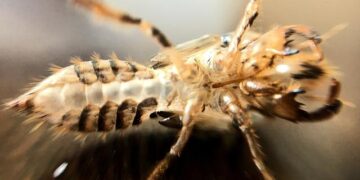The Impact of Master Naturalists on Community Conservation
Introduction to Master Naturalists
Master Naturalists are increasingly becoming key players in local conservation initiatives. These dedicated individuals commit their time and talents to protecting natural resources and enhancing ecosystem health within their communities. Their efforts not only foster environmental stewardship but also contribute significantly to public awareness and education about ecological issues.
Empowering Communities through Education
One of the primary roles of Master Naturalists is to educate the public about wildlife, plant species, and sustainable practices. They often organize workshops, guided nature walks, and volunteer opportunities that provide hands-on experiences. For instance, recent statistics revealed that educational programs led by these volunteers reached over 10,000 participants last year alone.
Field Projects: Hands-On Conservation Efforts
In addition to educational outreach, Master Naturalists actively participate in a wide array of field projects aimed at preserving local habitats. Activities can range from planting native vegetation to monitoring wildlife populations and restoring wetlands. Such initiatives are crucial for maintaining biodiversity as they help rehabilitate impacted ecosystems.
A Case Study: Wetland Restoration Success
Take the example of a recent wetland restoration project spearheaded by a group of Master Naturalists in the Midwest. By collaborating with environmental agencies and utilizing volunteer resources, they were able to rejuvenate over 100 acres of degraded land within just one year—an impressive transformation that resulted in increased flora variety and improved water quality.
Building Partnerships for Greater Impact
Collaboration is essential for effective conservation work. Master Naturalist programs often forge partnerships with various organizations including schools, parks departments, nonprofit entities, and government agencies. These alliances enable them to amplify their impact through shared knowledge and combined efforts towards common conservation goals.
Statistics Reflecting Collective Success
According to recent findings from state wildlife offices, areas where Master Naturalist volunteers are active have shown up to a 30% increase in native plant populations compared with regions lacking similar volunteer engagement—a clear indicator of how community involvement enhances landscape health.
Inspiring Future Generations
The commitment shown by Master Naturalists not only fosters present-day efforts but also nurtures future generations’ passion for environmental protection. By mentoring youth through school programs or nature camps run by experienced naturalists, they instill an appreciation for the environment early on—encouraging young people to become lifelong advocates for sustainability.
Conclusion: The Essential Role of Volunteerism in Conservation
Master Naturalists play an invaluable role in bolstering community-driven conservation strategies. Their dedication leads not only to tangible results such as improved ecosystems but also promotes greater community responsibility toward protecting our planet’s natural beauty for years ahead. As more individuals join these ranks worldwide—inspired by real successes—the potential for impactful change continues expanding exponentially.






























